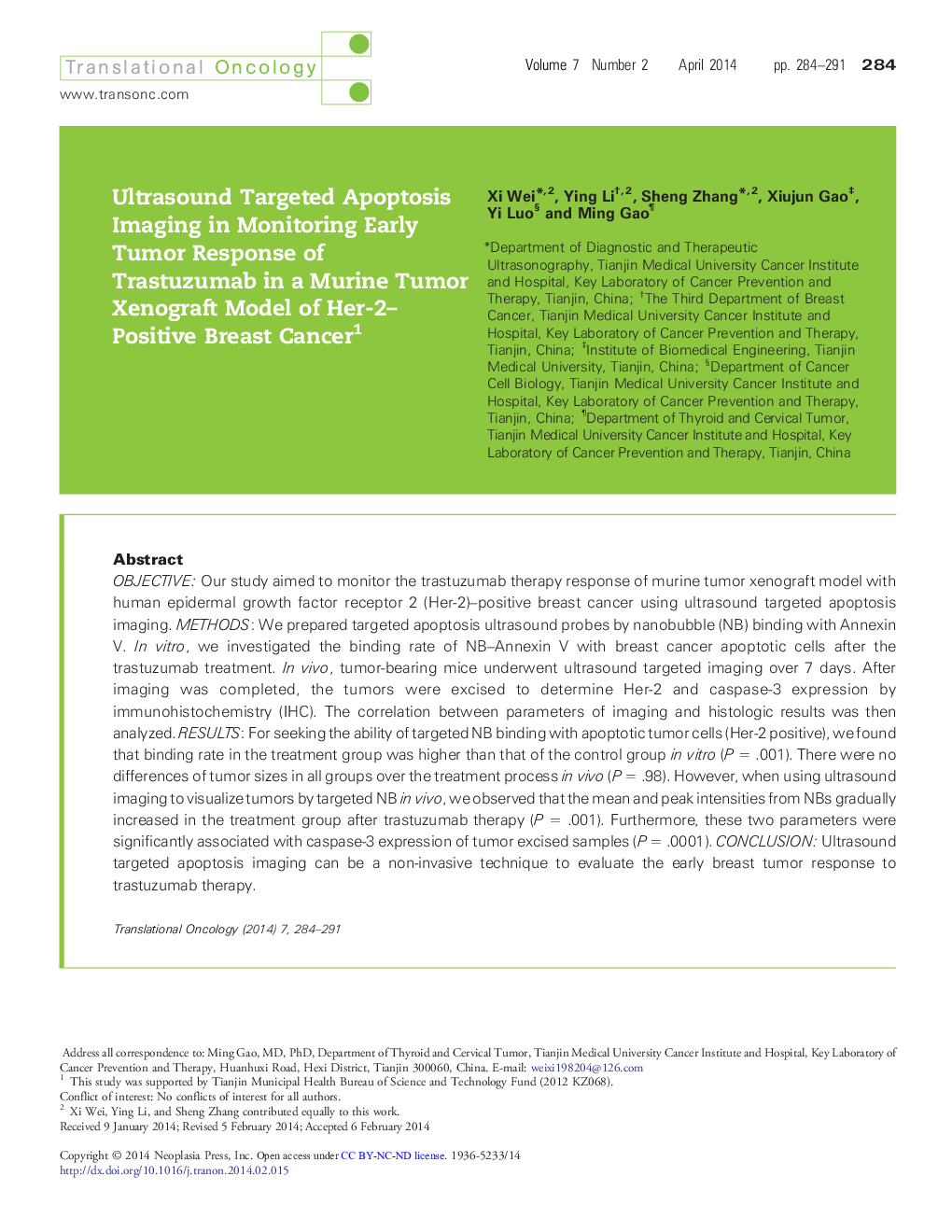| Article ID | Journal | Published Year | Pages | File Type |
|---|---|---|---|---|
| 2163555 | Translational Oncology | 2014 | 8 Pages |
OBJECTIVE: Our study aimed to monitor the trastuzumab therapy response of murine tumor xenograft model with human epidermal growth factor receptor 2 (Her-2)–positive breast cancer using ultrasound targeted apoptosis imaging. METHODS: We prepared targeted apoptosis ultrasound probes by nanobubble (NB) binding with Annexin V. In vitro, we investigated the binding rate of NB–Annexin V with breast cancer apoptotic cells after the trastuzumab treatment. In vivo, tumor-bearing mice underwent ultrasound targeted imaging over 7 days. After imaging was completed, the tumors were excised to determine Her-2 and caspase-3 expression by immunohistochemistry (IHC). The correlation between parameters of imaging and histologic results was then analyzed. RESULTS: For seeking the ability of targeted NB binding with apoptotic tumor cells (Her-2 positive), we found that binding rate in the treatment group was higher than that of the control group in vitro (P = .001). There were no differences of tumor sizes in all groups over the treatment process in vivo (P = .98). However, when using ultrasound imaging to visualize tumors by targeted NB in vivo, we observed that the mean and peak intensities from NBs gradually increased in the treatment group after trastuzumab therapy (P = .001). Furthermore, these two parameters were significantly associated with caspase-3 expression of tumor excised samples (P = .0001). CONCLUSION: Ultrasound targeted apoptosis imaging can be a non-invasive technique to evaluate the early breast tumor response to trastuzumab therapy.
